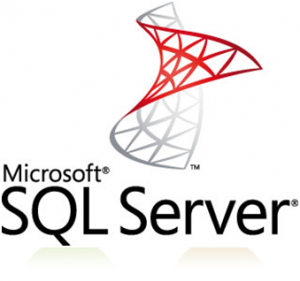Additional Material: Download Course Slides Link
This intensive course is aimed at getting students familiar with SQL Server administration skills and tools. Improving database and server performance will be covered. Along with administering databases in the Azure cloud. This will include implementing a database security model. The course will contain the new features in the latest version of SQL Server. This course can be customised for other versions of SQL Server.
Duration:
5 Days
Prerequisites
- Before attending this course, students must have:
- Understanding of relational database concepts
- Experience of querying database tables
- Experience using SQL Server Management Studio
7 Top Takeaways from our courses
- Improve database design
- Improve query performance
- Improve database resilience with a backup policy
- Secure data stores by restricting user access
- Access remote data stores
- Integrate diverse data stores to a single repository
- Reduce infrastructure costs by storing data in the cloud
Module 1: SQL Server Overview
- The Role of Database Providers
- Client Side and Server Side Components
- SQL Server Architecture
- SQL Server Developer Tools
- SQL Server Sample Databases
Module 2: Installing SQL Server
- Preparing for Installation
- Upgrading an Earlier Version
- Installing SQL Server
- Configuring the Server
Module 3: Working with SQL Server Management Studio
- Getting Started with SSMS
- Exploring the Object Explorer
- Working with the Query Editor
- Using SQL Server Books Online
Module 4: Designing a Database
- Defining Entities
- Applying Normalisation
- Database Objects
- System Tables
- Defining Databases
- Setting Database Options
- Managing Data and Log File Growth
Module 5: Implementing Tables
- Creating Tables
- Setting Column Data Types
- Adding and Dropping a Column
- Generating Column Values
- Adding Constraints
- Using the Identity Property
Module 6: Backup and Recover a Database
- Database Recovery Models
- Backing Up Transactions Logs and Databases
- Backing Up in Management Studio
- Restoring in Management Studio
Module 7: Design and Administer Security Levels
- Designing security plan
- Administering server and database authentication
- Administering database authorization
- Administering database permissions
- Administering users, groups and roles
Module 8: Indexing Tables
- Introduction to Indexes
- Index Architecture
- How SQL Server Retrieves Stored Data
- How SQL Server Maintains Index and Heap Structures
- Deciding Which Columns to Index
Module 9: Managing Transactions and Locks
- Introduction to Transactions and Locks
- Managing Transactions
- SQL Server Locking
- Managing Locks
Module 10: Accessing Linked Servers
- Introduction to Distributed Queries
- Executing an Ad Hoc Query on a Remote Data Source
- Setting up a Linked Server Environment
- Executing a Query on a Linked Server
- Executing a Stored Procedure on a Linked Server
- Managing Distributed Transactions
- Modifying Data on a Linked Server
- Using Partitioned Views
Module 11: Monitoring and Tuning
- SQL Servers inbuilt monitoring tools
- Use SQL Profiler to monitor a database
- Describe how the Index Tuning Wizard works and when to use it
- Define database partitioning
Module 12: Automating Administrative Tasks
- Using SQL Server Agent
- Creating and scheduling job
- Maintenance Plans
- SQL Management Objects (SMO)
Module 13: Programming Replication
- Overview of SQL Server Replication
- Replication Programming Interfaces
- Configuring Replication
- Synchronizing Data
Module 14: Using Integration Services
- Importing and Exporting Data
- Integration Services Tools
- Building a Package
- Troubleshooting a Package
Module 15: New Features in SQL Server
- Always Encrypted
- Stretch Database
- Real-time Operational Analytics
- PolyBase into SQL Server
- Native JSON Support
- Enhancements to AlwaysOn
- Enhanced In-Memory OLTP
Module 16: Working with Azure SQL Databases
- Creating an Azure SQL Database
- Connecting to an Azure SQL Server
- Exporting data from an on-premises database
- Querying an Azure SQL Database
Module 17: Azure SQL Database Admin Features
- Security
- Advanced Threat Protection
- Auditing
- Dynamic Data Masking
- Elastic Pools
- Monitoring
- Tuning
